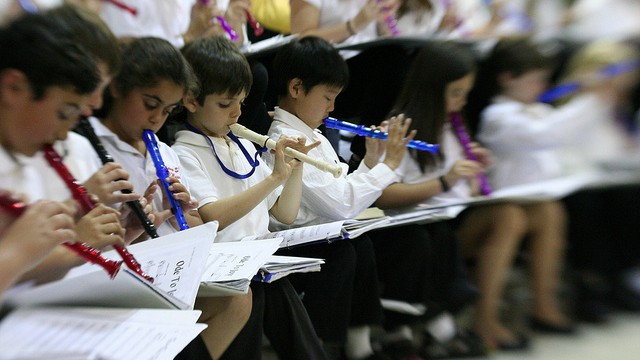Music education, it seems, is just plain good for you. In addition to recent research that suggests music training improves literacy, increases brain function, and leaves a lasting mark on the adult brain, a recent study out of Finland featured in the journal Music Education Research found that, even when controlled for gender, school music lessons for four hours a week, over time, left students feeling good about all aspects of school.
Researchers Päivi-Sisko Eerola and Tuomas Eerola looked at Finnish public schools that offered “extended music education,” in which students had to test in by singing and showing reasonable music skills. According to the study, students who were in the extended music classes after three years of participation (grades 3 through 6) were happier with all aspects of school than those who took a standard music class (they did not indicate how often the regular music class met).
“The results suggest that studying music does provide measurable social benefits. In the comprehensive school, pupils in the classes with extended music education were generally more satisfied with school life than pupils in the classes with a normal music education curriculum,” the researchers wrote.
The Eerolas point out that Finnish students had high test scores but low satisfaction scores, and school leaders responded by bringing in more "voluntary classes" like art and music to help students engage. Here in the U.S., many schools already recognize music classes as a priority for a variety of social and academic benefits, but hurdles like time and money keep schools from offering even elementary school students dedicated music class more than two times per week.
Some schools, however, are choosing to make music education a priority, finding creative ways to stretch both time and money to make daily music a reality. At the W.B. Travis Vanguard/Academy for the Talented and Gifted in Dallas, Texas, orchestra director Ken Hurst said that principal Mari Smith decided to make music a priority for students when the middle school opened 10 years ago. For students who choose instrumental music as an elective, classes are offered five days a week.


